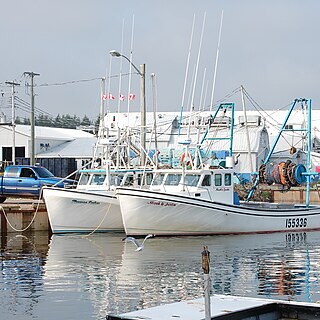
Stratford is a town located in Queens County, Prince Edward Island.

Adolphustown is a geographic area located in Greater Napanee, Ontario, Canada, on the Adolphus Reach of the Bay of Quinte in Lake Ontario. Adolphustown is now part of the town of Greater Napanee. The rural character of the Adolphustown region remains largely undisturbed today and the area, with its picturesque lakefront location, remains popular for the cultivation of apples and strawberries.

Events from the year 1860 in Canada.

Queens County is a county in the province of Prince Edward Island, Canada. It is the largest county in the province by population with 89,770 (2021) and land. Charlottetown is the county seat of Queens County, and is the largest city and the capital of Prince Edward Island.

Walter Maxfield Lea was a Prince Edward Island politician.

Lot 28 is a township in Prince County, Prince Edward Island, Canada. It is part of St. David's Parish. Lot 28 was awarded to Samuel Holland in the 1767 land lottery.
Alberton is a Canadian town located in Prince County, Prince Edward Island. It is situated in the western part of the county in the township of Lot 5.

Prince County is located in western Prince Edward Island, Canada. The county's defining geographic feature is Malpeque Bay, a sub-basin of the Gulf of St. Lawrence, which creates the narrowest portion of Prince Edward Island's landmass, an isthmus upon which the city of Summerside is located.

Ardgowan is a National Historic Site of Canada located in Parkdale, Prince Edward Island, currently a neighbourhood of the city of Charlottetown.

Miscouche is a municipality that holds community status in Prince Edward Island, Canada. It is located in Prince County.
Belmont is a Canadian rural farming community located in the larger community of Lot 16 in central Prince County, Prince Edward Island. Lot 16 is actually three communities: Belmont, Central, and Southwest Lot 16, and is one of the last communities on Prince Edward Island to continue using their lot designation from the original Island survey by Samuel Holland in the 18th century.

Murray Harbour is a community that holds rural municipality status in Prince Edward Island, Canada. It is located in southeastern Kings County.
Belfast is a rural municipality in Prince Edward Island, Canada. It is located in southeastern Queens County in the townships of Lot 57 and Lot 58.

Stanfield's Limited is a Canadian garment manufacturer based in Truro, Nova Scotia, with approximately 550 employees, whose company's products are sold throughout Canada and around the world.
Augustus Edward Crevier Holland was a farmer and political figure in Prince Edward Island. He represented 4th Prince in the Legislative Assembly of Prince Edward Island from 1873 to 1876 and from 1879 to 1886 as a Conservative member.
Henry John Callbeck was a merchant and political figure in Prince Edward Island. He represented 2nd Queens in the Legislative Assembly of Prince Edward Island from 1867 to 1876 as a Liberal member. While in his first term as a legislator, he served as a member of the province's Executive Council from 1867 to 1870.
Samuel Edward Reid was a farmer, manufacturer and political figure in Prince Edward Island, Canada. He represented 4th Prince in the Legislative Assembly of Prince Edward Island from 1899 to 1908 as a Liberal member.
John George MacKay was a farmer and political figure on Prince Edward Island. He represented 4th Prince in the Legislative Assembly of Prince Edward Island from 1949 to 1966 as a Liberal. MacKay was the 20th Lieutenant Governor of Prince Edward Island, serving from October 6, 1969, to October 24, 1974.
William Charles Lea was a farmer and political figure on Prince Edward Island. He represented 4th Prince in the Legislative Assembly of Prince Edward Island from 1876 to 1879 as a Liberal.













